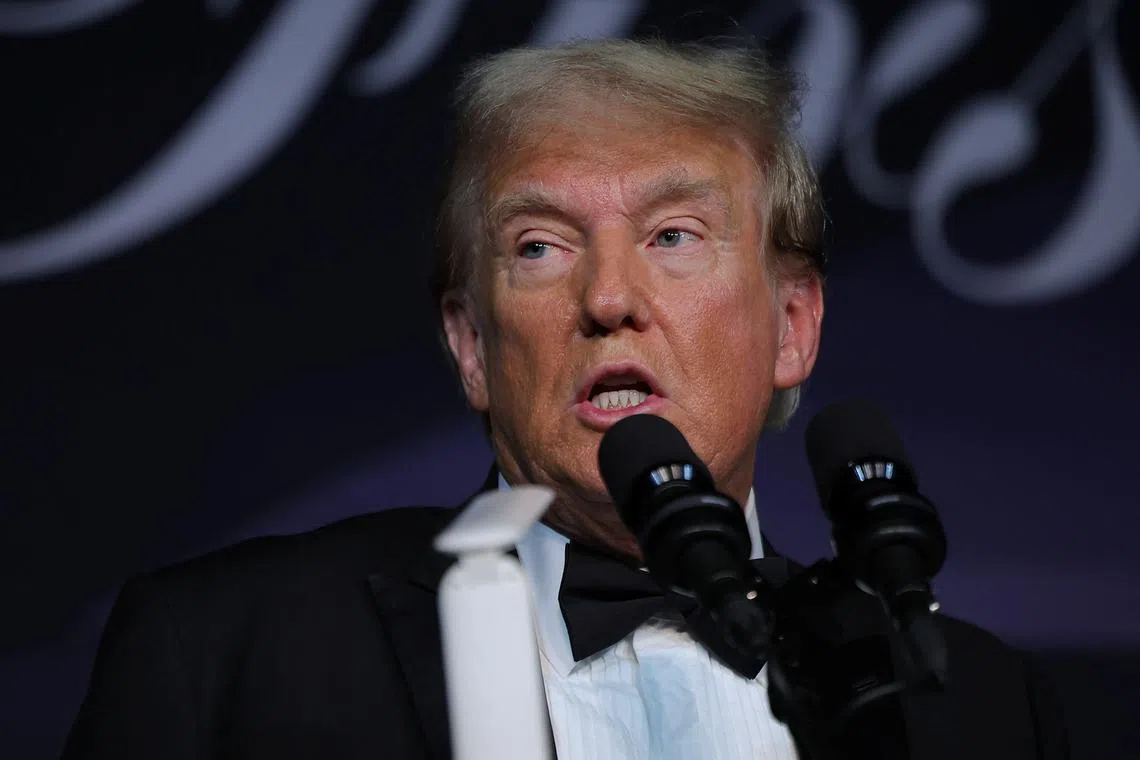US Congress has two days to avert govt shutdown after Trump rejects spending Bill
Sign up now: Get ST's newsletters delivered to your inbox

US President-elect Donald Trump pressured his fellow Republicans to reject a stopgap Bill to keep the government funded past the deadline of midnight on Dec 20.
PHOTO: REUTERS
Follow topic:
WASHINGTON – The US Congress has two days to avert a partial government shutdown after Republican President-elect Donald Trump rejected a bipartisan deal
Trump pressured his fellow Republicans in Congress to reject a stopgap Bill to keep the government funded past the deadline of midnight on Dec 20.
Absent congressional action, the US government will begin a partial shutdown on Dec 21 that would disrupt everything from air travel to law enforcement in the days leading up to the Christmas holiday.
The bipartisan deal reached on Dec 17 would have extended funding to March 14.
Trump warned that Republicans who vote for the current legislative package could have trouble getting re-elected because they will face primary challenges inside their own party.
“Any Republican that would be so stupid as to do this should, and will, be primaried,” Trump wrote on his Truth Social platform.
If it were to materialise, it would be the first government shutdown since one that extended from December 2018 into 2019, during Trump’s first four-year White House term.
Trump is now calling on Congress to pass legislation that would tie up loose ends before he takes office by raising the government’s borrowing authority – a politically difficult task – and extending government funding.
He also said lawmakers should strip out elements of the deal backed by Democrats, whose support would be necessary for passage.
Trump’s comments came after his ally, billionaire Elon Musk – who has been tasked by Trump to prune the federal budget – pressured Congress to reject the Bill and said those who back it should be voted out of office.
Talks continued late into the night
After a meeting with Vice-President-elect J.D. Vance and other top Republican leaders late on Dec 18, Republican House of Representatives Speaker Mike Johnson said there was a “productive conversation”, without giving details.
“I’m not going to say anything else about it tonight because we are in the middle of these negotiations,” Mr Johnson said.
When asked if raising the debt ceiling will be part of an agreement being worked on, House Republican leader Steve Scalise said lawmakers were “not there yet”.
House Appropriations Committee chair Tom Cole, who was also at the meeting, was asked if he was confident there would not be a government shutdown. He replied: “I’m not confident of anything.”
Next steps remain unclear
The next steps for Congress were unclear. Bipartisan agreement will be needed to pass any spending Bill through the House, where Republicans currently have a 219-211 majority, and the Senate, where Democrats currently hold a narrow majority.
The White House of Democratic President Joe Biden, who remains in power until Trump takes office on Jan 20, said on Dec 18 that “Republicans need to stop playing politics” and that a government shutdown will be damaging.
The current Bill would fund government agencies at current levels and provide US$100 billion (S$136 billion) for disaster relief and US$10 billion in farm aid. It also includes a wide range of unrelated provisions, such as a pay rise for lawmakers and a crackdown on hidden hotel fees.
Trump said Congress should limit the Bill to temporary spending and disaster relief and also raise the national debt ceiling now before it comes to a head in 2025.
The stopgap measure is needed because Congress has failed to pass regular spending legislation for the fiscal year that began on Oct 1. It does not cover benefit programmes such as Social Security, which continue automatically.
The US government has spent more money than it has taken in for more than 20 years, as Democrats have expanded health programmes and Republicans have cut taxes.
Steadily mounting debt – currently US$36 trillion – will force lawmakers to raise the debt ceiling at some point, either now or when borrowing authority runs out in 2025. Failure to act could have potentially severe economic consequences. REUTERS

